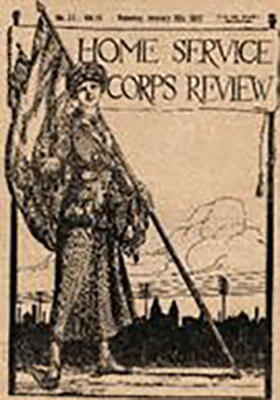
Exhibition highlights LSTM’s role in First World War
‘Over by Christmas? Life in Liverpool during the First World War’ is a programme of exhibitions and events across Liverpool’s libraries and the Victoria Gallery & Museum, as part of a national centenary commemoration of the First World War. Organised by Liverpool Libraries Together, the programme provides an overview of life in Liverpool between 1914 and 1918, by revealing some of the stories behind the Liverpool-based war efforts. LSTM has contributed material from its archives that shows to what extent the institution got involved.
During the summer of 1914, LSTM was building its first purpose built building at Pembroke Place which would house Liverpool-based research and teaching facilities. However, Britain’s entry into the First World War on 4th August 1914 led to the then so-called War Office’s announcement that temporary military hospitals were need in strategic locations throughout the UK. Due to Liverpool’s significance as a major port a number of military hospitals were opened to treat returning soldiers. In March 1915 Colonel William Coates accepted LSTM’s offer to become a military hospital, writing “I have every reason to hope that this great kindness on your part and that of your committee will prove of the greatest service in this greatest national emergency.”
The Liverpool School of Tropical Medicine Auxiliary Medical Hospital opened on 8th December 1915, the Hospital contained over 200 beds for patients suffering from diseases and disorders, including malaria and dysentery. In1916 LSTM staff treated 3,436 cases and examined over 100 samples per day for parasites. Over 2,000 malaria cases alone were being seen that year.
Prior to his retirement from LSTM in 1917, Lieutenant-Colonel Sir Ronald Ross was designated Professor of Tropical Sanitation by the War Office due to his expertise in malaria prevention. Many more staff members saw active service and when it became clear that malaria was responsible for more deaths than the fighting, the War Office asked for more research to be conducted into the disease and its treatment. Dr Blacklock was brought back from active service in The Dardanelles and Professor of Parasitology, Captain Warrington Yorke, who was based in Malta (1915-1916), returned to conduct malaria treatment studies.
A series of 32 papers were published in the Annals of Tropical Medicine and Parasitology known as ‘Studies in the Treatment of Malaria’. The scope of the research covered the treatment of malaria patients, diagnostic procedures, epidemiology, basic biological science and clinical observations. The work of LSTM during and following the First World War would play an import part in an international effort that would ensure that casualties during the Second World War from diseases such as malaria were greatly reduced.
The war had a major impact on teaching, LSTM’s Diploma in Tropical Medicine was suspended in 1915 and short courses for officers of the Royal Army Medical Corps were offered by the limited staff who remained behind.
The exhibition 'Over by Christmas? Life in Liverpool during the First World War' can be found on the Red Wall first floor galleries of the Victoria Gallery & Museum until 26 September 2014.

LSTM Professors Robert Newstead (bottom row far left), John WW Stephens (bottom row third from right) and Warrington Yorke (bottom row far right), with a class of Royal Army Medical Corps students in 1916.